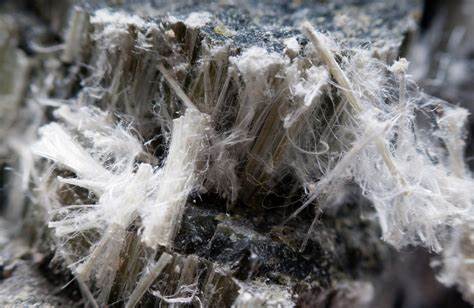The Lingering Threat of Asbestos: Past, Present, and Future
Asbestos, a naturally occurring mineral, has a complex and notorious history. This fibrous mineral was once celebrated for its remarkable heat-resistant properties, making it a popular choice in construction and manufacturing. However, the rise in asbestos-related health issues prompted a global awakening to its dangers. In this article, we will delve into the past, present, and future of asbestos, exploring its history, health risks, regulations, and potential remediation efforts.

The Historical Ascent of Asbestos
Asbestos has been used for thousands of years. Ancient Greeks and Romans utilized its fire-resistant properties to create textiles and even embalm their dead. It wasn’t until the industrial revolution that asbestos’s popularity surged. Its heat-resistant characteristics made it a staple in construction, shipbuilding, and the automotive industry. Asbestos was even featured in countless household products, from insulation to brake linings.
Health Hazards and the Asbestos Epidemic
The downside of asbestos became increasingly apparent as medical research progressed. Inhalation of asbestos fibers was linked to severe health issues, notably lung cancer, asbestosis, and mesothelioma. The slow onset of these diseases, sometimes taking decades to manifest, made it difficult to establish causation. Asbestos-related deaths surged, and the global asbestos epidemic was born.
Regulations and Asbestos Bans
Realizing the need to protect public health, governments around the world initiated stricter regulations and eventually bans on asbestos. As of my last knowledge update in September 2021, over 60 countries, including the European Union, had implemented bans or severe restrictions on asbestos use. The United States also heavily regulated asbestos, although a complete ban had not been enacted. It’s important to note that regulations may have evolved since then.
Asbestos in the Present
Asbestos continues to be a concern, particularly in older buildings and industrial settings where it was once heavily used. The process of asbestos removal is costly and requires specialized expertise. When managed improperly, it poses a significant risk to workers and the environment. Asbestos-containing materials that are intact and undisturbed generally do not pose an immediate threat. However, proper identification and maintenance are vital to prevent exposure.
The Future of Asbestos: Remediation and Innovation
The future of asbestos involves finding safe and sustainable solutions for its removal and disposal. Remediation efforts aim to contain or remove asbestos from existing structures, often using advanced safety measures. Innovations in materials science seek to develop asbestos alternatives with similar heat-resistant properties without the health risks.
Conclusion
Asbestos, once hailed as a wonder material, has evolved into a global health crisis. The journey from widespread use to strict regulations and bans demonstrates society’s growing awareness of the risks it poses. While progress has been made in minimizing exposure, asbestos remains a threat in existing structures. The future holds the promise of safe remediation methods and innovative substitutes, ultimately paving the way to a world free from the enduring specter of asbestos-related diseases.